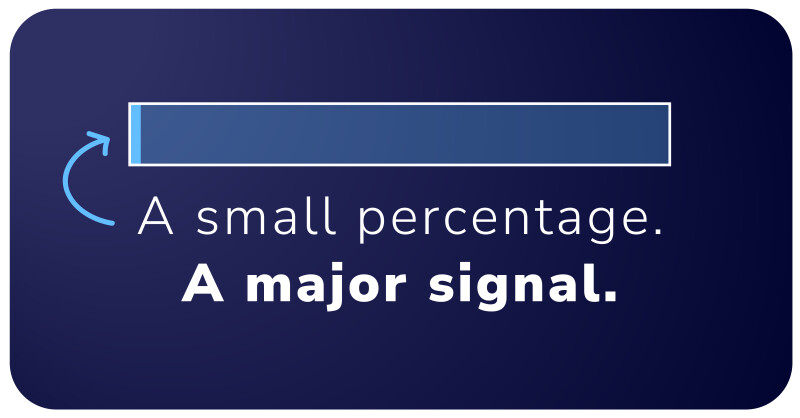With generative AI tools like ChatGPT becoming core parts of the student decision journey, many higher ed marketers are asking:
“Shouldn’t we be seeing more traffic from LLMs by now?”
And specifically, “If only 2% of our site traffic is coming from large language models, is that a red flag?”
The short answer? Not at all. In fact, 2% may be right on track. Here’s why.
First, Let’s Put the 2% in Context
Many institutions we work with are reporting that 1–3% of web sessions now originate from LLMs, and most of that is traceable to ChatGPT’s browser plugin or linked citations.
So if you’re seeing 2%—you’re not behind. You’re in line with the trend.
But more importantly, focusing solely on traffic from LLMs misses the bigger picture.
LLMs Haven’t Really Been Traffic Drivers Until This Year
Here’s a key technical reality that many overlook:
- Linked citations in ChatGPT weren’t available to free-tier users until December 2024.
- And since 80% of all LLM usage happens on ChatGPT, that means the LLM with the largest audience has only been a potential traffic source for the last 7 months.
Before that, people may have been discovering your content through AI, but they couldn’t click out to your site—because clickable links didn’t exist in most experiences.
So even if you had great content being cited in ChatGPT in 2023, there was no mechanism to drive sessions.
Visibility ≠ Clicks—and That’s OK
The bigger misunderstanding here is treating traffic as the main goal of LLM visibility. But LLMs are not search engines—they’re answer engines.
That means:
- A student might read your program details without ever visiting your site
- A well-structured summary of your curriculum might influence a decision within the chat window itself
- You may never see the session in your analytics—but the influence still occurred
We call these “zero-click impressions”, and while they're hard to measure, they’re increasingly important.
So… Is 2% from ChatGPT Good?
Yes—and it’s getting better.
If you're seeing:
- Direct referrals from ChatGPT
- Structured content surfacing in AI overviews
- Better inquiry quality (even with lower traffic volume)
...then you’re already ahead of the curve. The number will grow as more AI tools support external linking and search behavior evolves.
But don’t measure success only by LLM-driven sessions. Instead, ask:
- Are our programs appearing in AI-generated answers?
- Are the descriptions accurate, compelling, and structured?
- Are we seeing improved conversion efficiency from those influenced leads?
Shift the Metric: From Traffic to Influence
As AI reshapes the digital landscape, we need to rethink our KPIs. The best questions to ask now are:
- Are we showing up where students are searching and asking?
- Are we enabling AI to represent us clearly?
- Are we tracking downstream metrics—applications, enrollments, and inquiry quality—not just clicks?
Because in the age of AI, traffic isn’t the finish line—it’s one of many signals of visibility, influence, and impact.

